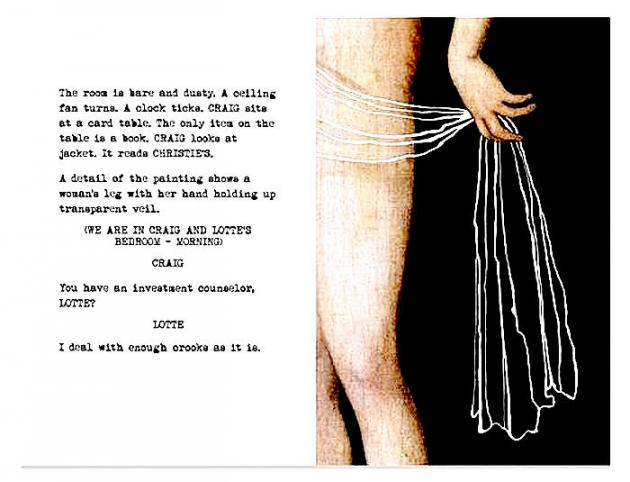John Baldessari has influenced generations of artists as both an educator and creator, for over five decades. Announced ahead of his London and Paris shows at Marian Goodman Gallery, The School of the Museum of Fine Arts, Boston, will celebrate this iconic artist and long-time educator at the Medal Award Gala on May 18, 2015, in the Ruth and Carl J. Shapiro Family Courtyard at the Museum of Fine Arts, Boston.
From his early text-and-image paintings to the more recent photo-collages, Baldessari has continued to make art that addresses the social impact of mass culture, often playfully, and always with a sly profundity. His lifelong exploration of the gap between the verbal and the visual has probed the very nature of communication and perception.
“John Baldessari has spent his career making transformative and critically important work while tirelessly dedicating himself to his students we could not imagine a more meaningful honoree for the SMFA Medal Award this year,” says Committee Chair Abigail Ross Goodman. “His unrelenting commitment to his practice as artist and teacher, and his ongoing critique of image-making, has been profoundly influential on generations of students and fellow artists, as well as the broader public. We are proud to be able to include him in our history at SMFA.”
John Baldessari (b. 1931) studied at San Diego State College, U.C. Berkeley, UCLA, the Otis Art Institute, and the Chouinard Art Institute. He taught at the California Institute of the Arts in Valencia, CA from 1970–1988 and the University of California at Los Angeles from 1996–2007. He has received numerous awards including the Goslar Kaiser Ring, Germany (2012); the Golden Lion Award for Lifetime Achievement, La Biennale di Venezia, Italy (2009)
The London exhibition, ‘Pictures & Scripts’ is a series of 20 new paintings that juxtapose still images appropriated from black and white films with excerpts from fictive narrative film scripts. Removed from their original contexts, these appropriated film stills capture moments of paused action, within which selected forms have been discretely over-painted in monochrome fields. The excerpts of dialogue between unknown characters hint at conversations between art world insiders, humorously denuding the commercial arm of the art industry. The lineage of these diptychs can be traced back to Baldessari’s early experiments with text and image in the mid-1960s, wherein empty canvases were painted with statements derived from contemporary art theory, one of which, Space, 1966-68, will be presented in the Paris exhibition.
The film images in Pictures & Scripts are cropped to heighten their ambiguity, deliberately isolating iconic film roles like cowboys, gangsters and ingénues, displaced from their original dramatic context and animated with new narratives for the viewer to construct. Each painting is a diptych composed of an image and text element, the text half of each painting similarly presents a glimpse of a larger dialogue, seemingly lifted from its original context. Language and image are presented on equal ground without hierarchy, so that the essence of the work is in the intersection of the two. The arrangement of words and images has been a defining interest of Baldessari’s since the 1960s when he stated “a word could be an image or an image could be a word, they could be interchangeable’’.
Initially trained as a painter, Baldessari began experimenting with text and photography and incorporating them into his work in the mid-1960s, evolving his practice through the 1970s into printmaking, film, sculpture and installation. Baldessari has developed a body of work that demonstrates and discloses the narrative potential of images and their associative power with text and language of which the foundations can be found in a selection of key pieces in Early Work.
Early Work at the Paris gallery comprises examples from most of Baldessari’s major series; National City, Commissioned Painting, Thaumatrope, Strobe/Futurist, Portrait and Goya series, each giving a unique overview of the breadth and development of his practice. Some of the work on display, including Study for Econ-O-Wash (Version B) , 1967 have rarely been exhibited since their creation.
Bird #1, 1962, the earliest work in the exhibition, presents an image of a bird falling through the picture plane. Again, an early example of Baldessari’s use of cropping for dramatic effect, the bird has been cut in such a cinematic way as to suggest its falling through the air. Bird #1 belongs to a small group of paintings that escaped destruction, when on July 21 1970 Baldessari decided to ceremoniously cremate 125 works, including many oil paintings, made between 1953 and 1966.
Following Baldessari’s seminal statement “I will not make any more boring Art”, he conceived the work The Artist Hitting Various Objects with a Golf Club, 1972-73, composed of 30 photographs of the artist swinging and hitting with a golf club objects excavated from a dump, as a parody of cataloging rather than a thorough straight classification.

